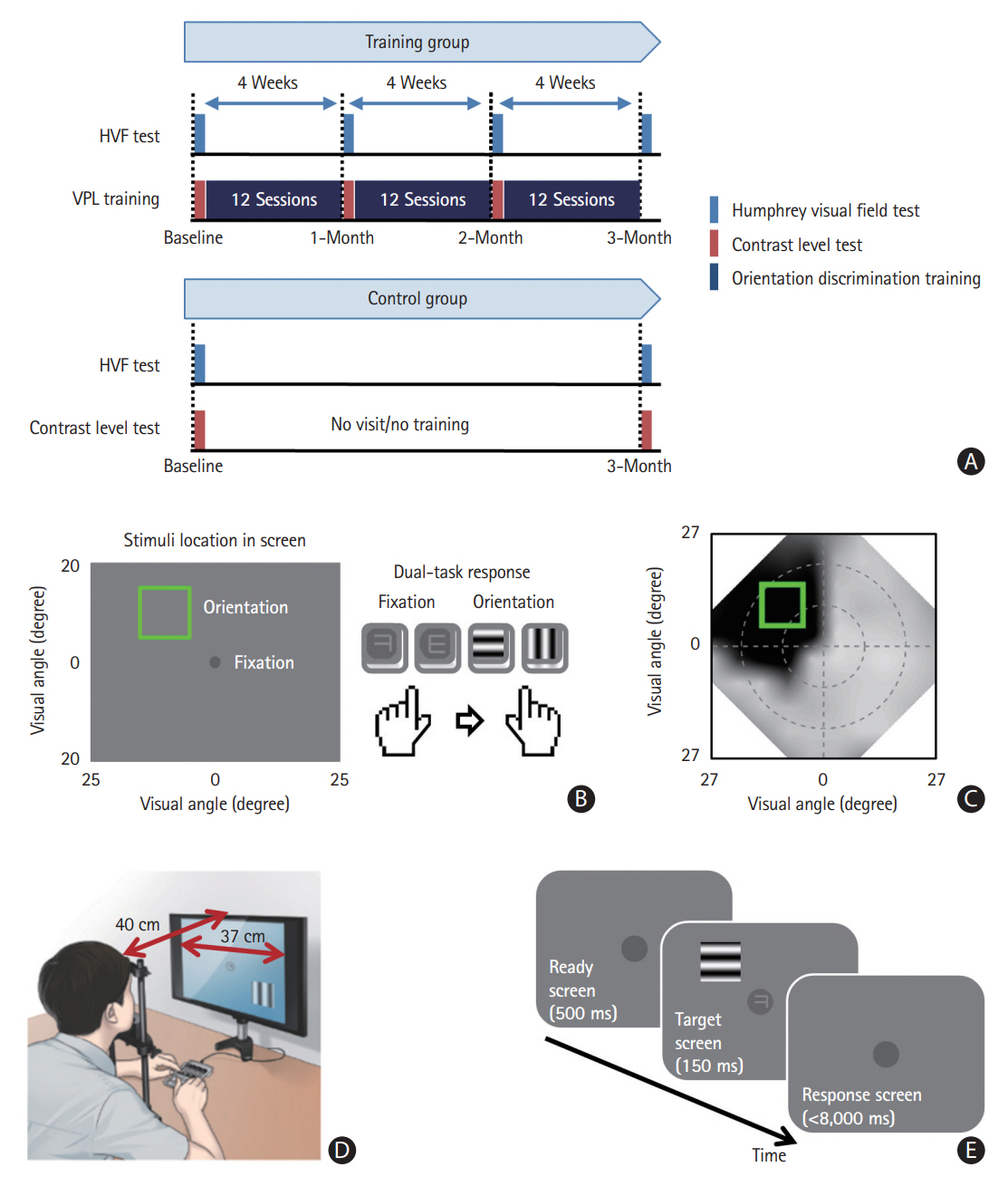J Stroke.
2023 Sep;25(3):409-412. 10.5853/jos.2023.00276.
Digital Therapeutics With Visual Discrimination Training for Cortical Blindness in Patients With Chronic Stroke
- Affiliations
-
- 1Department of Neurology, Asan Medical Center, University of Ulsan College of Medicine, Seoul, Korea
- 2Center for Neuroscience Imaging Research, Institute for Basic Science, Suwon, Korea
- 3Nunaps Inc., Seoul, Korea
- 4Asan Institute for Life Sciences, Seoul, Korea
- 5Department of Cognitive, Linguistic and Psychological Sciences, Brown University, Providence, RI, USA
- KMID: 2546442
- DOI: http://doi.org/10.5853/jos.2023.00276
Figure
Reference
-
References
1. Pollock A, Hazelton C, Rowe FJ, Jonuscheit S, Kernohan A, Angilley J, et al. Interventions for visual field defects in people with stroke. Cochrane Database Syst Rev. 2019; 5:CD008388.2. Bergsma DP, van der Wildt G. Visual training of cerebral blindness patients gradually enlarges the visual field. Br J Ophthalmol. 2010; 94:88–96.3. Raninen A, Vanni S, Hyvärinen L, Näsänen R. Temporal sensitivity in a hemianopic visual field can be improved by long-term training using flicker stimulation. J Neurol Neurosurg Psychiatry. 2007; 78:66–73.4. Sahraie A, Trevethan CT, MacLeod MJ, Murray AD, Olson JA, Weiskrantz L. Increased sensitivity after repeated stimulation of residual spatial channels in blindsight. Proc Natl Acad Sci U S A. 2006; 103:14971–14976.5. Cavanaugh MR, Blanchard LM, McDermott M, Lam BL, Tamhankar M, Feldon SE. Efficacy of visual retraining in the hemianopic field after stroke: results of a randomized clinical trial. Ophthalmology. 2021; 128:1091–1101.6. Kim YH, Kang DW, Kim D, Kim HJ, Sasaki Y, Watanabe T. Real-time strategy video game experience and visual perceptual learning. J Neurosci. 2015; 35:10485–10492.7. Yotsumoto Y, Watanabe T, Sasaki Y. Different dynamics of performance and brain activation in the time course of perceptual learning. Neuron. 2008; 57:827–833.8. Cavanaugh MR, Huxlin KR. Visual discrimination training improves Humphrey perimetry in chronic cortically induced blindness. Neurology. 2017; 88:1856–1864.9. Leske MC, Heijl A, Hyman L, Bengtsson B. Early Manifest Glaucoma Trial: design and baseline data. Ophthalmology. 1999; 106:2144–2153.10. Bonkhoff AK, Grefkes C. Precision medicine in stroke: towards personalized outcome predictions using artificial intelligence. Brain. 2022; 145:457–475.
- Full Text Links
- Actions
-
Cited
- CITED
-
- Close
- Share
- Similar articles
-
- Customized Visual Discrimination Digital Therapy According to Visual Field Defects in Chronic Stroke Patients
- A Case of Transient Cortical Blindness after Cardiopulmonary Resuscitation
- Cortical Blindness After Cerebral Angiography
- Bilateral Cortical Blindness Caused by Tentorial Herniation due to Brain Tumor
- Digital Therapeutics: Emerging New Therapy for Neurologic Deficits after Stroke



